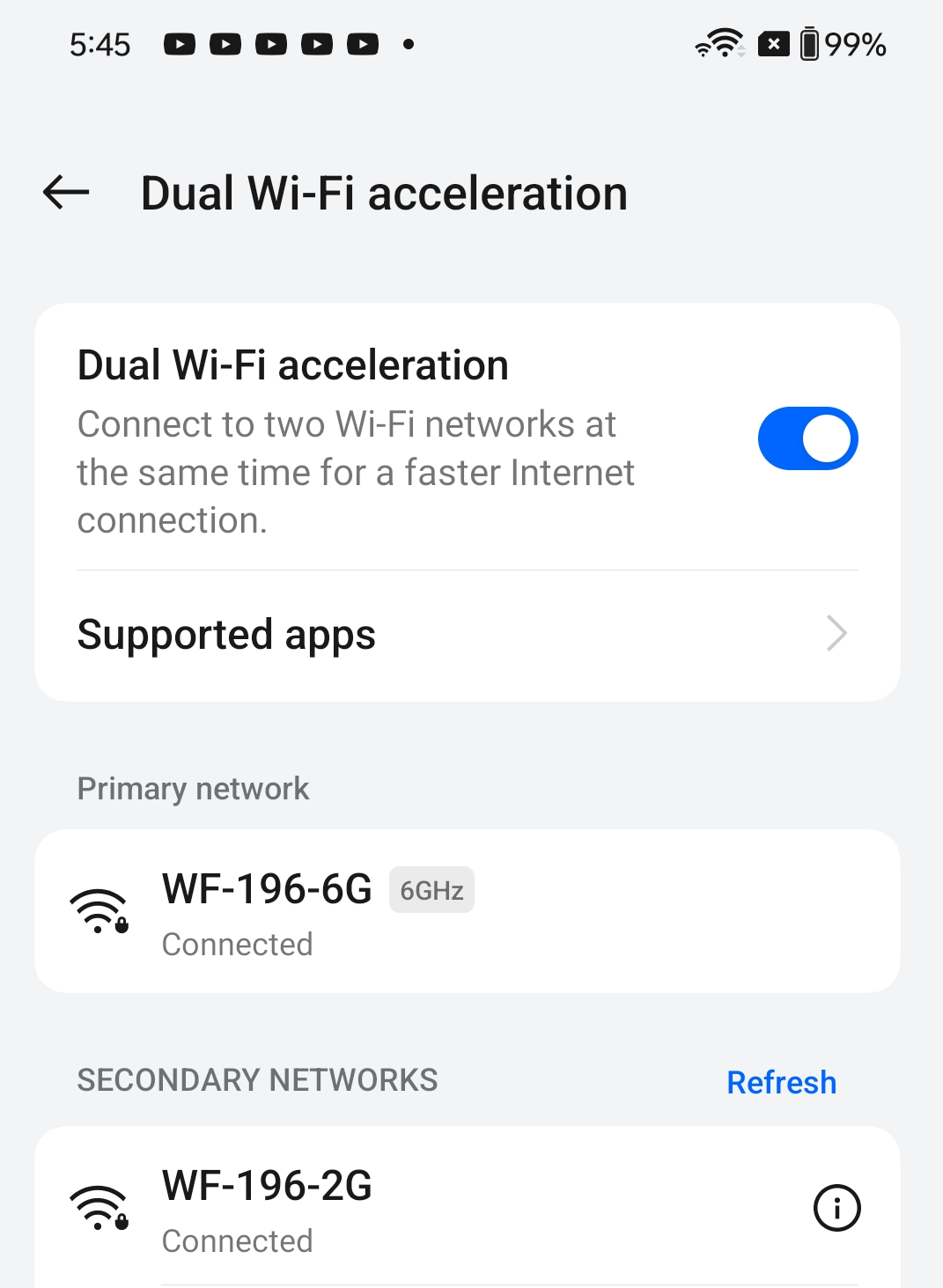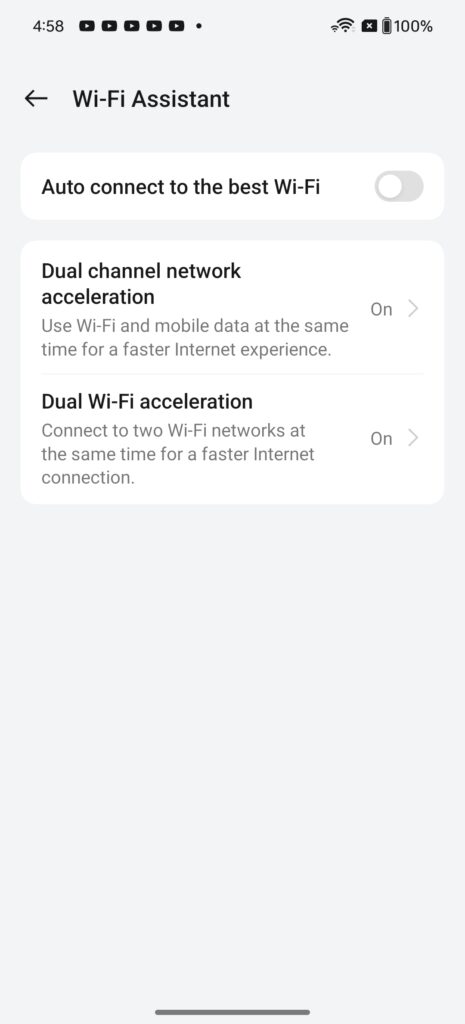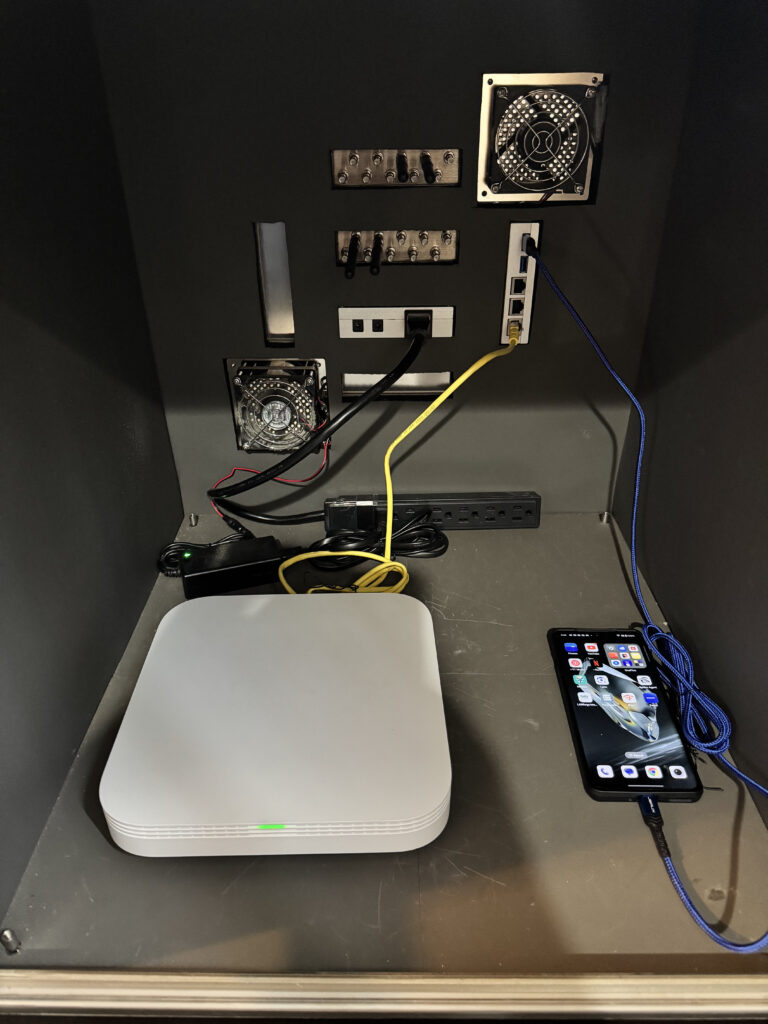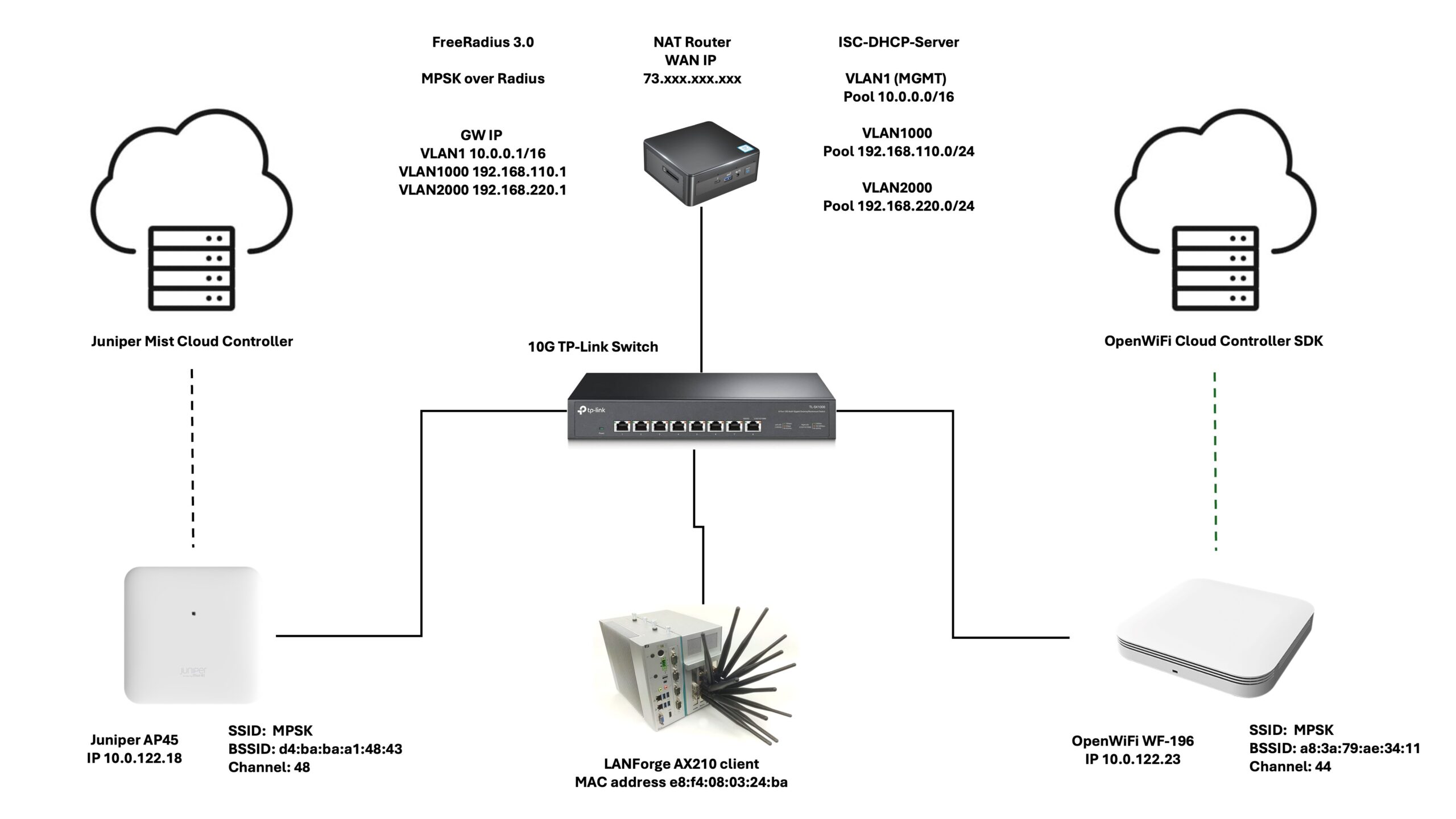
The OnePlus 12 offers a feature called “Dual WiFi Acceleration” under the WiFi Assistant page, claiming to achieve faster internet speeds by connecting to two WiFi networks simultaneously.

To evaluate this claim, I set up an OpenWiFi CIG WF-196 AP, a 4×4 WiFi 6e access point (AP) with support for 160MHz bandwidth on 6GHz, 80MHz on 5GHz, and 40MHz on 2.4GHz. I configured distinct SSIDs for each band:
- WF-196-6G for 6GHz on channel 33 with 160MHz bandwidth
- WF-196-5G for 5GHz on channel 116 with 80MHz bandwidth
- WF-196-2G for 2.4GHz on channel 1 with 40MHz bandwidth
To maximize performance, I paired the OnePlus 12 with the AP using the 6GHz and 2.4GHz bands within an RF isolation chamber.

Although the OnePlus 12 is WiFi 7-capable, this setup does not leverage Multi-Link Operation (MLO). Instead, the phone establishes two separate physical connections over different radios. It appears to use some sort of load-balancing algorithm to optimize throughput across both links.
Using ADB commands and screen mirroring, I ran a speed test to a local Open SpeedTest server hosted on my router. In the video below, you can see how the phone successfully establishes two physical connections, one on wlan0 and the other on wlan1. The “iw dev wlan0/1 link” command outputs, refreshed every second, display packets sent and received over both interfaces.
However, the results were somewhat underwhelming. While the phone successfully maintained connections on both the 6GHz and 2.4GHz bands, traffic was rarely transmitted over both bands simultaneously. As shown in the video, almost all packets during the speed test were sent and received on the 6GHz link.
Another noteworthy observation was the failure of the 2.4GHz link to reach its expected PHY rate of 573.5Mbps on the uplink, despite the short distance and high RSSI. This may be due to degradation in beamforming due to maintaining simultaneous connections on both the 6GHz and 2.4GHz bands.
Despite these limitations, the Dual WiFi Acceleration feature holds promise. If optimized correctly, it could offer WiFi 7-like performance, similar to MLO, on legacy APs.









Related Posts